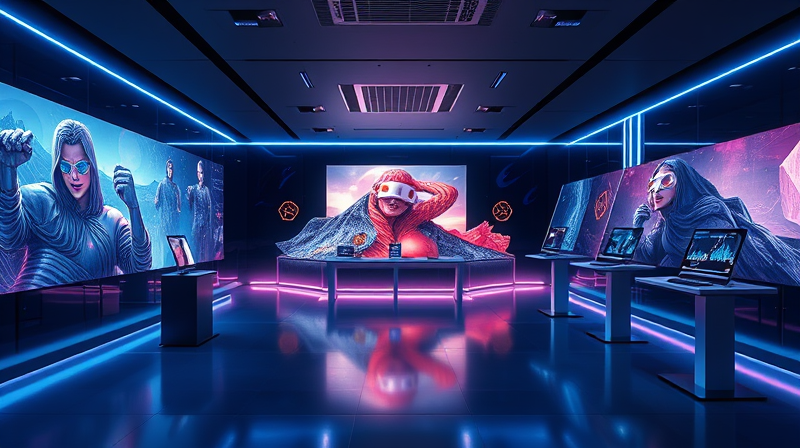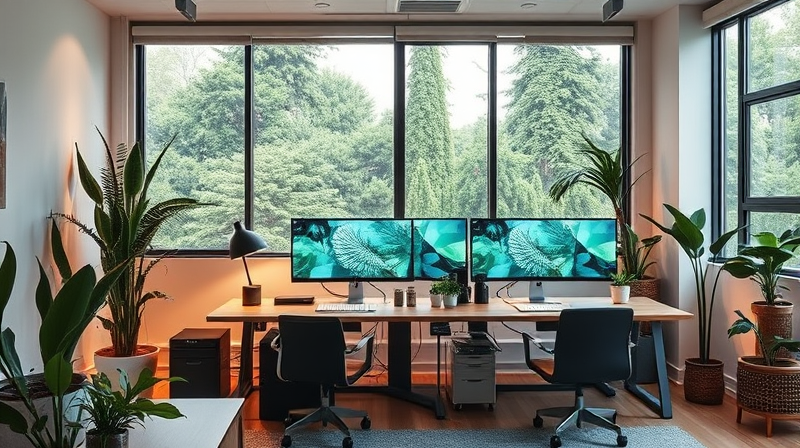The transformation of the art world is happening before our very eyes. New technologies, innovative platforms, and a focus on sustainability are reshaping the way we create, experience, and interact with art. This revolution is especially visible in virtual galleries and art exhibitions that provide immersive and accessible experiences for art enthusiasts from every corner of the globe.
Virtual galleries have opened doors to art worlds previously inaccessible due to geographical, financial, or physical challenges. Now, anyone with an internet connection can explore high-definition 3D representations of curated collections while experiencing the artwork in a fresh, innovative way.
Embracing Digital Innovation
With the rapid progress in technology, digital innovation is driving the evolution of traditional art exhibitions. Virtual Reality (VR) headsets have enhanced user experience, allowing visitors to step into interactive, three-dimensional museum environments. By donning VR equipment, visitors become part of an immersive narrative where art comes alive, far beyond the static images that once defined exhibitions.
Augmented Reality (AR) is yet another remarkable tool that artists and curators are using to enrich art exhibitions. AR overlays digital elements such as animations, historical details, or additional multimedia information directly on physical artworks. This blend of the digital and physical worlds creates a truly interactive and educational experience for the audience.
Furthermore, the integration of multisensory experiences that combine sound, visuals, and even tactile or olfactory elements is becoming increasingly popular. This approach allows audiences to engage with art on multiple levels, making the experience more profound and emotionally resonant than ever before.
Accessibility and Democratization of Art
One of the most inspiring aspects of the digital revolution in the art world is how it is breaking down traditional barriers. Virtual galleries not only make art more accessible but also serve as a platform for emerging artists who might otherwise have little exposure. This democratization helps to level the playing field, enabling new talents to connect with a global, diverse audience.
Digital art platforms are also experimenting with blockchain-based solutions such as NFT galleries. These innovations empower artists by allowing for the secure sale and collection of digital works, transforming art galleries into dynamic marketplaces. The result is an art ecosystem where creativity and business converge in a way that benefits both artists and collectors.
Hybrid and Sustainable Exhibitions
Hybrid exhibitions, which blend the best features of digital and physical art displays, are rapidly becoming the norm. Physical galleries now incorporate digital tools such as mobile apps, interactive kiosks, and online walkthroughs. This unique combination allows for a hands-on experience of tangible art while also offering broad digital accessibility.
The shift towards digital exhibitions is also significant from an environmental perspective. Traditional art shows often require extensive transportation, packaging, and physical infrastructure that contribute to a larger carbon footprint. Virtual galleries, on the other hand, reduce the need for such logistics, making them a more sustainable choice in today’s eco-conscious society.
The movement toward sustainability not only helps reduce environmental impact but also aligns with a growing commitment among consumers to ethical and responsible practices. This forward-thinking approach is setting a new standard for how art exhibitions can both inspire and educate while remaining sensitive to global challenges.
Data-Driven Personalization and Future Trends
The application of artificial intelligence (AI) in virtual galleries is another breakthrough. AI algorithms analyze user preferences, leading to highly personalized art experiences. Whether through curated tours or tailored recommendations, this technology ensures that every visitor feels uniquely connected to the artwork they are observing.
Looking ahead, several key trends are set to shape the future of virtual art exhibitions in 2025 and beyond:
- Cross-Disciplinary Collaboration: Partnerships between artists, luxury brands, and technology firms are creating boundary-pushing and dynamic interactive exhibits.
- Video Game Artistry: With video games gaining recognition as a legitimate art form, collaborations between traditional artists and game developers are producing narrative-driven experiences that blur lines between gaming and fine arts.
- Cultural Preservation: Digital platforms are increasingly used to archive and reinterpret cultural heritage, ensuring that diverse histories are celebrated and accessible to future generations.
Each of these trends not only underlines the technological advances in the art world but also emphasizes the continuous journey towards inclusive and engaging cultural expression. It is a movement where art lovers, regardless of location or background, can feel connected and inspired.
Ultimately, the reimagined art experience in virtual galleries is much more than a temporary shift or fad—it is a testament to human creativity and adaptability. By embracing digital innovation, the art community is fostering a space where creativity can thrive without traditional constraints.
The coming years promise even more breakthroughs and developments that will further integrate technology with art, widening the scope and reach of exhibitions worldwide. For both artists and art enthusiasts, this digital transformation is a call to engage, explore, and participate in a vibrant cultural revolution.
This inspiring journey suggests that art, when combined with technological innovation, becomes a powerful medium to unite people, spark meaningful conversations, and leave a lasting impact on society. The future certainly looks bright for a world where art constantly evolves to meet and surpass the expectations of its global audience.







